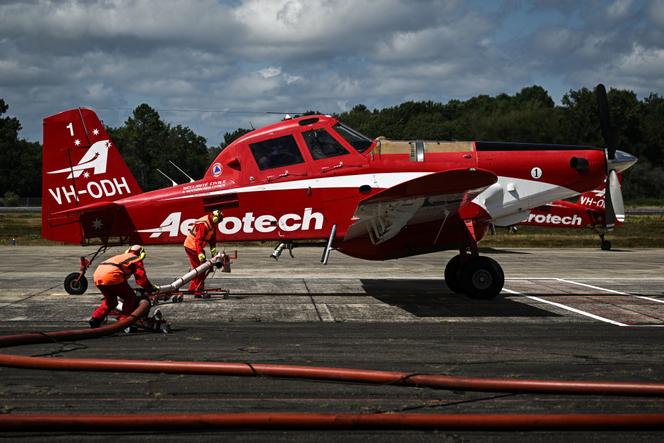


Algeria, Greece, Italy, Spain, and Portugal: these are some of the countries around the Mediterranean and southern Europe that were hit by violent fires in July. France, on the other hand, seems to have escaped these major fires so far. Compared with the summer of 2022, which were marked by the megafires in Gironde, which saw more than 20,000 hectares of forest go up in smoke, the situation has been relatively calm. Between January 1 and July 31, some 9,000 hectares were burned, according to the Office National des Forêts (ONF), a number that is slightly below the average for the last ten years (around 10,000 hectares), said Christophe Chantepy, of the forest fire defense agency. Well below the 47,000 hectares that went up in smoke over the same period in 2022.
"The apparent calm at the end of July was due to widespread precipitation in the south, particularly at the end of May and beginning of June, then later further north. The vegetation was greener and the land less dry, which explains the lower number of fires," explained the ONF forest fire expert. "But with July's temperatures and drought, the worst could come in August."
Weather doesn't explain everything. In fact, if France seems to be coping better than other countries with the proliferation of major summer fires, it's largely thanks to its hard and fast attack strategy for dealing with incipient fires. Here is proof: while the number of hectares destroyed by flames is lower than the average for the decade, the number of fires started (4,500 since the beginning of the year) is more or less the same. For Eric Brocardi, spokesman for the Fédération Nationale des Sapeurs-Pompiers de France (FNSPF), this is a sign that the strategy adopted by France since the early 1990s – following the gigantic fires of the summers of 1989 and 1990 – is working. "We still have just as many, if not more, fires starting, with fewer hectares burned. Thanks to these rapid and full-scale attacks on incipient fires, four out of five fires remain contained within an area of less than ten hectares," explained Brocardi.
The principle is simple but requires considerable resources, which explains why other affected countries face difficulty in implementing this strategy. It involves pre-positioning human and material resources in potential hotspots, as soon as the risks are significant: drought, unfavorable weather with high heat and strong winds. "Sending emergency units to at-risk areas, as soon as the weather conditions are right for possible major fires, in the South but also in the Southwest since the fires of summer 2022, reduces transit times," argued Lieutenant-Colonel Jean-Paul Bosland, president of the FNSPF.
You have 56.81% of this article left to read. The rest is for subscribers only.
